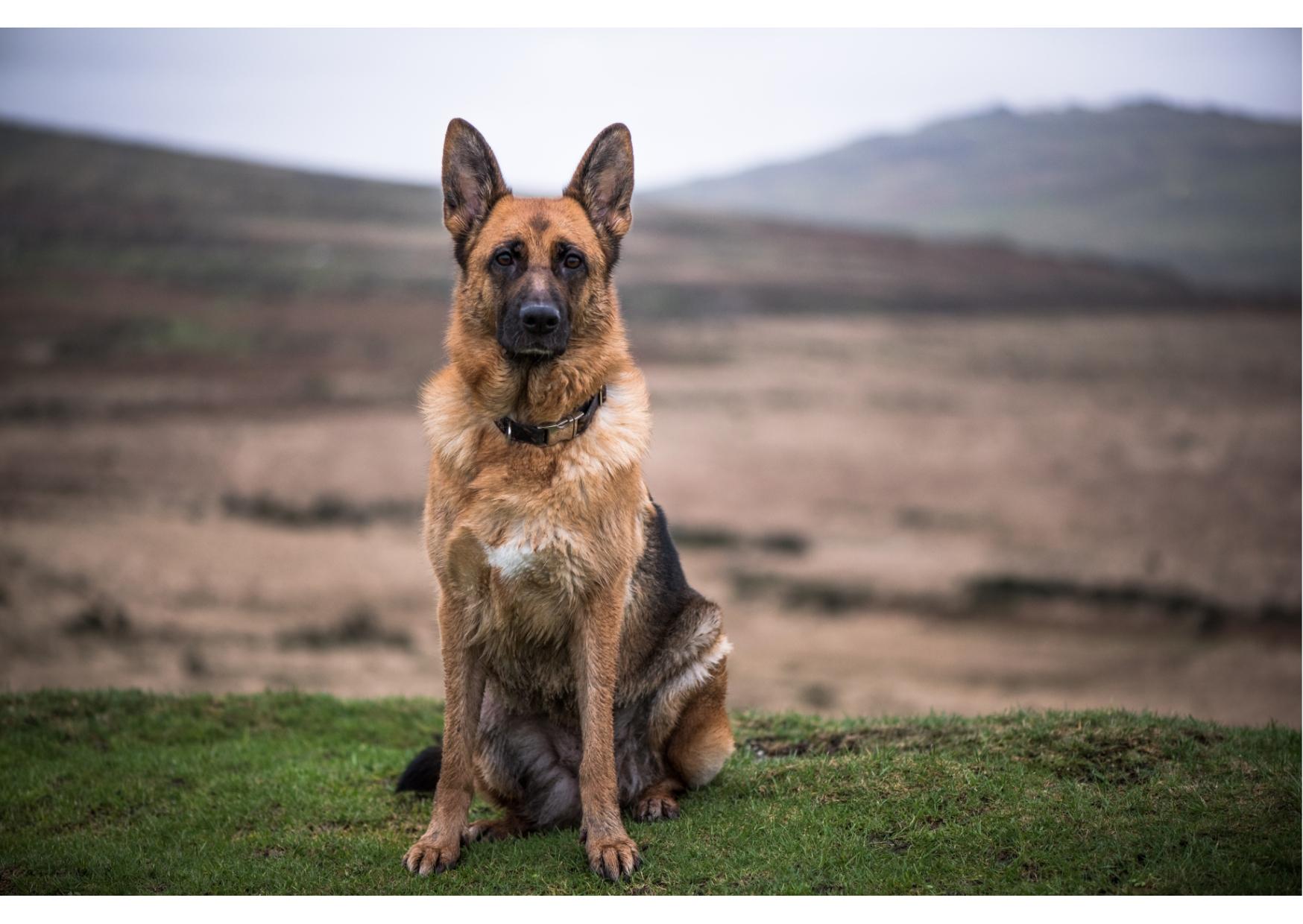GERMAN SHEPHERD
| Group: | Herding |
|---|---|
| Size: | Large |
| Temperament: | Confident, brave, and intelligent |
| Height: | 24-26 inches (male), 22-24 inches (female) |
| Weight: | 30-40 Kg (male), 22-32 Kg (female) |
| Life Expectancy: | 7-10 years |
| Origin: | Germany |
| Coat Length: | Medium |
| Coat Type: | Double |
| Color: | Black Black & Cream Black & Red Black & Silver Black & Tan Blue Grey Liver Sable White Bi-colour. |
About
German Shepherd dogs are confident, courageous, obedient, and loyal, no wonder they are among the most popular breeds. They have a strong and muscular build, with a distinctive wolf-like appearance that is characterized by a pointed snout, erect ears, and a bushy tail.The German Shepherd is a top-notch working dog, adept at a wide range of services ranging from military to guard dog. They also make wonderful companions.
Nutrition
Your GSD will require high quality age appropriate dog food depending on its age (puppy, adult, or senior). Avoid giving your GSD table leftovers since it may create intestinal issues. Avoid cooked bones and high-fat foods as well. Biscuits or dog kibbles can be given as a treat. In the absence of high-quality meals, incorporate yoghurt, cooked vegetables, or eggs.
Ideal Meal Breakdown
Protein
36
Fat
22
Carbohydrates
34
Others
8
Exercise
Originally bred as herders, they need to be both physically (jogging, a romp at the dog park) and mentally (training exercises like agility or obedience competitions) stimulated to thrive. Boredom and inactivity might lead to behaviour problems—chewing, digging, and barking. If you cannot dedicate a couple of hours a day to engage with your GSD for some vigorous exercise, then this breed probably is not for you.
Grooming
German Shepherd dogs are not high maintenance and are pretty easy to groom and maintain. They shed a lot and therefore require weekly brushing. During shedding season, switch it up with daily brushing. Trim his nails once a month, if they aren’t naturally worn out and invest in a good canine toothpaste to ensure good oral hygiene.
Training
A well-behaved GSD requires a high level of control and training. They, like guard dogs, can be aloof and suspicious of strangers. Expose him to other people, places, and experiences to familiarize them with family/social dynamics. Include puppy training classes in addition to obedience training to help them overcome their overprotective and aggressive tendencies.
Health
In general, GSDs are a healthy breed of dogs. However, elbow dysplasia, hip dysplasia, and degenerative myelopathy are a few medical conditions observed among GSDs. Like many deep-chested dogs, German Shepherds are prone to bloat, a life-threatening gastric condition. A nutritious diet, and plenty of exercise and rest are essential to their longevity. But ultimately, it is the bond between human and canine that is the strongest force in keeping these noble creatures healthy and whole.
History
German Shepherds are one of the most well-known breeds in canine history, with origins dating back to 1899. They are the result of the efforts of German Captain Max von Stephanitz, a career captain in the German Cavalry who set out to develop a superior German breed of herding dog. Even today, German shepherds are preferred K-9 officers for police and military forces around the world. These loyal and intelligent canines served as messengers, search and rescue dogs, and supply dogs during both world wars. Though they make amazing companions and house pets, German Shepherds love to have a job they can complete and would go to any lengths to protect their family.
